Click Here for Vacation Watering!
How do you keep your plant containers and pots watered in the heat of summer without running yourself ragged with watering? Especially with several containers to keep hydrated, you need more than just watering thoroughly each time. You need a secret in your pocket.
This is an easy way to keep your planters watered and prevent them from drying out all season. Choose your favorite planter with a water reservoir. The extra water will be stored until the soil starts to dry out and will keep it moist for an extended time without the addition of water from you, as long as that reservoir lasts.
Self-watering Planters, Pots, SIP, Sub-irrigated planters, whatever term you like to use, it all leads to my favorite solution to keep your plants happy, healthy, and well hydrated.
Here are some hand-selected choices that are well-made and worth the investment.
Best Self-Watering Pots For Outdoors:
Lechuza. A classy, sophisticated German self-watering planter. Great quality, fabulous reviews. People have become Luchuza groupies, and buy again and again to replace all of their planters with these! Click here to browse the current collection on Amazon. These have a subtle bobber-type indicator showing the water level in the reservoir.
There are 2 types, the classic, you re-pot your plant directly into the planter, and there even is a specialized substrate that can be used. I can see how using the substrate would discourage fungus gnats. Gnats feed on decaying organic matter, and this ‘soil’ would not have any for them to feed on. The second you keep your plant in its original store container and use the wick system. Both are very reliable Click HERE to see the current collection.
Mayne Self-watering Planter. I loved to find this one! Double-wall construction to insulate roots from the heat, and in the winter (if you are fortunate enough to live in a zone that doesn’t drop below freezing for more than a night or so ( do drain out the reservoir on below-freezing nights though, or simply do not use the self-watering feature in the winter), plants will need water so much less in the cooler temps anyway. Lightweight, yet durable. Made in the USA, woohoo! Click here to see current collections.
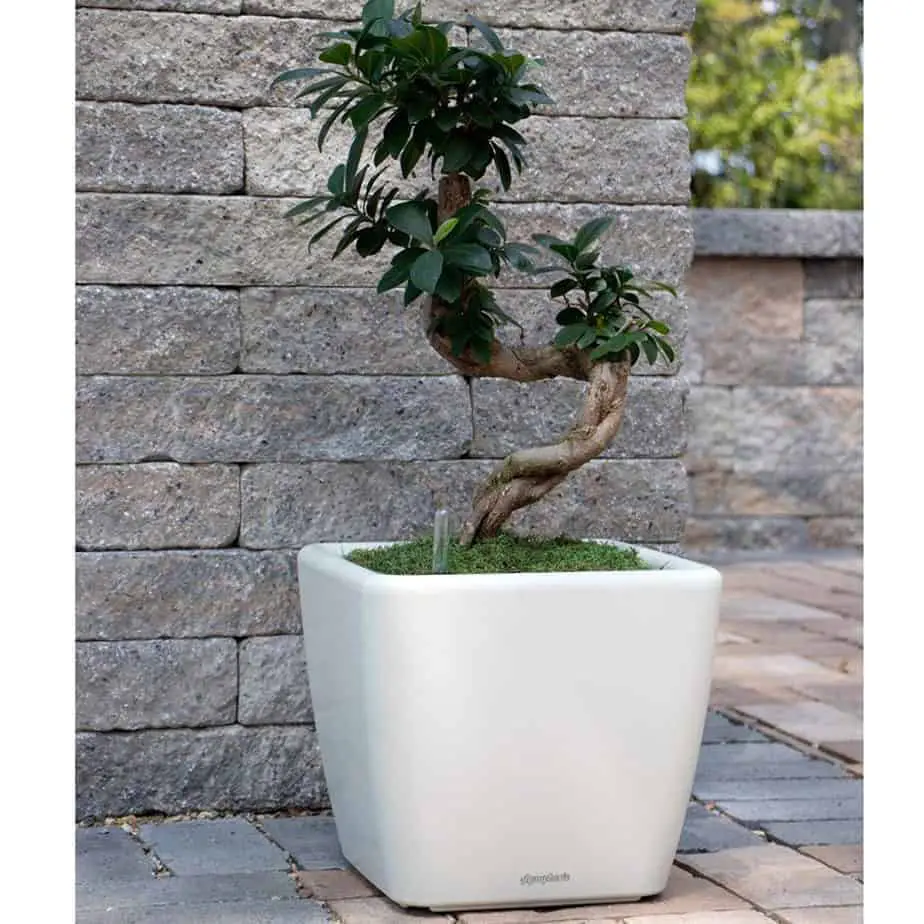
Aquaphoric is a clean modern planter, large enough to consider using outside beside your front door, and with it being self-watering, you can have a smaller footprint without the constant water needs of a regular pot! Aquaphoric also has smaller window sill planter shapes as well, perfect for that spot in the sun! Click here to see the current collection.
Best Self-Watering Pots For Vegetables:
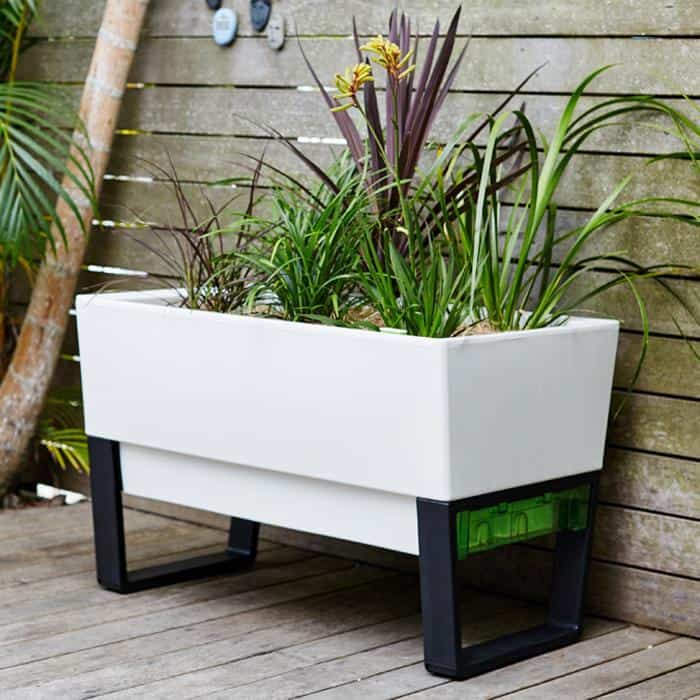
GlowPear is a raised large self-watering planter that even can be connected to each other to make a row of interconnected planter boxes. No need to fill water reservoirs individually!! Click here to see the latest collection at Amazon.
Best Self-Watering Hanging Basket:
Self Watering Hanging Basket, finally!! Cue the angelic music! The Weekender is a full 16″ wide, drop-in, no fidgety water indicator taking up room and making re-potting difficult. Love a self-watering pot that you can buy an already grown, beautiful flowering hanging basket, and drop it into your labor-saving SIP pot, tuck in a little more potting soil, and off you go! Be careful to check to see if the water reserve is low before adding water, as does not appear to be a drain plug for excess. But that’s easy! Lift to see how heavy it is before watering. That’s how I check my hanging baskets now! The colors available change, I have the light green one.
Click here to check it out on Amazon!
Gardener’s Supply Reservoir, adapt your container into a self-watering planter! Gotta love it, especially if you already have planters you love, just adapt them into a self-watering planter with this at Amazon.com before planting!
GroBucket Garden Kit. If you have a pretty container that a 5 gal bucket will fit into…turn it into a self-watering container with this easy kit!! yes, you could make one yourself, if you had the tools, time to get the supplies, skill in making, and time to do so..or grab a few of these!! In more casual areas, let your imagination run free, and some inspiration from Pinterest, and decorate to match your decor!
Best Self-watering Pots For Office Plants:
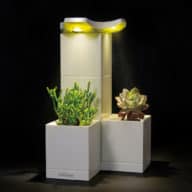
Looking for a great modern look in a self-contained, including light, self-watering planter? This is perfect for the office, kitchen, inside the front door…..anywhere. Clean, tidy, and reviews rate very highly!! Definitely on my wishlist. LeGrow Office Green click here to check it out on Amazon.com.
Best for Vertical Gardening:
Worth Gardening Wall Mounted Planters. Self-watering, design any way YOU like, living wall. I really liked how the irrigation worked, some folks said it over-watered the top row before the water ran down to the bottom, HOWEVER, I loved this because you can’t over-water a potted plant in one sitting. The soil can only hold so much. It automatically encourages you to water thoroughly, rather than often! A major plus in my book. Read my post on watering to see WHY I say this. Click here to check it out.
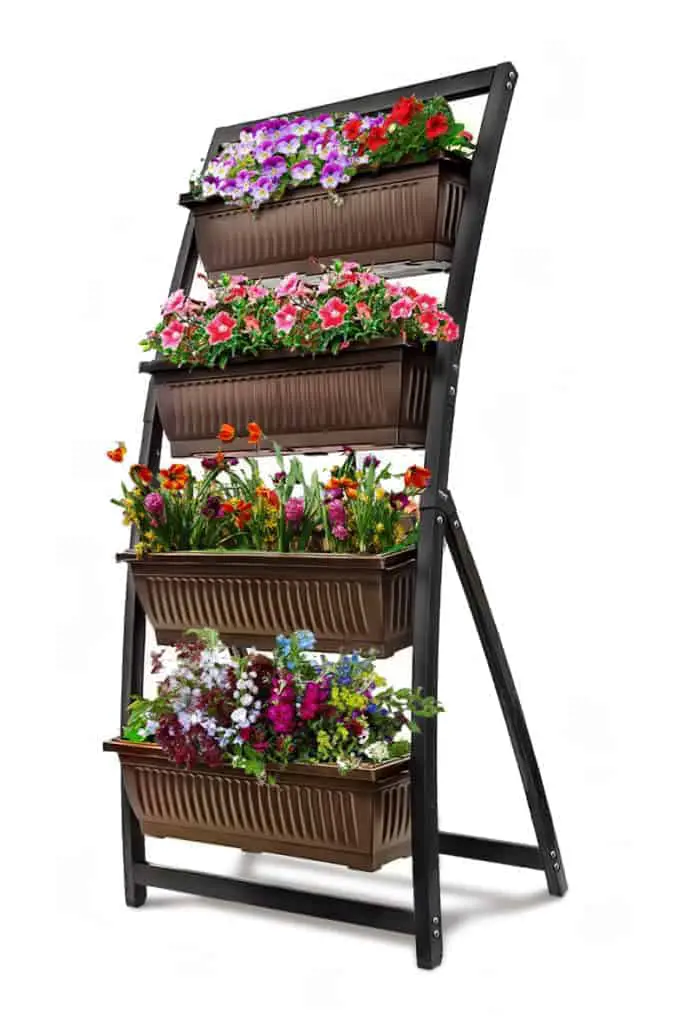
I love the sophisticated, elegant curved design of this frame! Such a step up from the utilitarian squared-off holder frames. Use that vertical space for limited footprint areas, or even screening on your porch! Not self-watering, but the cascading watering system works so you do not have water everywhere, leaking on your balcony, or on your neighbors down from your balcony. Outland Living, 6 ft Vertical Garden click here to see on Amazon.com.
Whenever buying pots, containers, jardiniere, or urns, it is important that you keep in mind where you are going to use them. Consider:
- materials
- frost tolerance
- drainage
- permeability
- size
- shape
- proportion in space
- color
- portability
- pot feet
Materials
Pots can be made from:
- stone
- cast concrete
- cast pottery
- glazed pottery
- terra cotta
- wood
- metal
- plastic
- cloth
- a re-purposed container of any material
Stone is the utmost durable, substantial, and natural. You can choose from rough-hewn or polished smooth. Either way, the color will always like metallic goes with everything, and natural stone goes with everything, it’s a neutral element. Stone will be heavy, so be sure your entrance can withstand the weight. Remember that the weight also deters pranksters from making off with them or the wind from knocking them over! Stone is expensive usually since it is a specialty craftsman or artisan item. Each piece can be its own unique, one-of-a-kind item. Unique, one-of-a-kind items usually add a multiplier to the cost. Drainage is a function of the drainage holes drilled into these. Even stone can be split by the force of freezing water trapped in an undrained pot.
Cast concrete has many of the advantages and disadvantages of stone. Durable, substantial, natural. Rough-hewn or polished. Neutral. Heavy. Being cast, you can get matching containers, and decorative elements without being hand-carved, and the associated costs of hand-carved. The same warning regarding needing drainage.
Pottery, whether cast, glazed, or terra cotta, is less expensive, usually, because of the lower labor costs. It can be any color, natural neutrals, or you can get any color glaze under the rainbow. If you live in a climate where there are freezing temperatures, you will want to bring these in for the winter unless specifically labeled for frost resistance.
Regular terra cotta, not labeled frost resistant, will absorb moisture flake and degrade in freezing temperatures.
Wood containers will need protection from rotting from moisture. Naturally rot-resistant woods can be used and is recommended. Rot protectant coatings are not recommended for use in vegetable or herb gardening. I prefer to avoid them in containers, regardless, if I intend on growing something edible in them. If you can’t change your mind and put some herbs in it later, why limit yourself?
Most wood containers are protected from direct soil contact with plastic liners. Wood does have some insulation value, which helps protect the roots from damage in the cold months.
Metal containers are classic in urns. Cast iron! These are getting more and more difficult to find these days. They are heavy and difficult to move, so mail order is not a ready option. Metal does not have any insulation value, either from the cold or from the sun, the heat. As a side note, please, do not paint your cast iron urn black, unless it will only, ever, be in all shade. The sun’s heat will cook the roots, and in full sun, on a hot day, will even burn you, yes, it has happened to me!
Plastic containers are all around us. They are cheap, light, come in every color, and can even have textures. Plastic, if not UV stabilized, will degrade in the sun, and be brittle and the color will fade in the sun. Unless they are fully double-walled, there is no insulation value in plastic pots. This will leave your plants more vulnerable to heat and cold stress. Not to be used to grow winter evergreens or year-round containers, because of the lack of insulation and the brittleness in the cold. On the plus side, if there are no drainage holes when you buy them, drainage holes are easy to drill in. Plastic is a fine option, but nothing that will last for years.
Whatever material you choose to use for your container, consider if this is just for a season, or a more permanent planting. If only a season, you can use whimsical re-purposed items for that country chic. Otherwise, consider long-term concerns.
Related Questions:
Do Self-Watering pots cause root rot?
No, self-watering pots do not cause root rot, as long as they are properly designed with an overflow spout. This allows excess water to drain off and not saturate the potting soil the plants are growing in.
Root rot’s primary cause is over-watering. The term overwatering does not mean too much volume of water, but instead the frequency of watering. If potting soil is watered again before it has a chance to become UN-saturated, this is when root rot can start. Overwatering is from watering too often, not the volume of water at each watering.
Saturated soil means the soil can not hold any more water at all. All of the tiny air pores are full as well. The soil must be allowed to drain off to allow tiny air pockets to drain off and allow oxygen to the roots. This happens normally, as long as the water can drain off from drainage holes, or overflow spout, without collecting and staying in a saucer.
Do Self-Watering Pots Attract Mosquitos?
Self-watering pots can attract mosquitoes, who will enter through the overflow spout to breed in the water reservoir. They can be stopped in the same ways you would prevent mosquitoes in any standing water.
To prevent mosquitoes in your self-watering containers put a few drops of oil in the reservoir. I prefer neem oil (due to its repellant properties of other insects beyond mosquitoes), mint, or cinnamon, but any oil will do. Just a few drops are plenty. Alternatively, you can put in a mosquito dunk, which is odorless. You can find the ones I like by clicking the links!
-
Water New Trees & Flowers – Volume, Frequency & Best Tips

After transplanting trees, shrubs, annuals, and perennials, into your landscape, watering will be first on your list of concerns. Getting this right will solve the number 1 reason why plants
-
Should You Buy It? Cercis canadensis ‘Flame Thrower’ Redbud

If you will take the time to make sure this tree remains vigorous, it is well worth it! A stellar new tree with loads of color and interest even when
-
Japanese Maples W/ Unusual Peach Color on New Leaves In The Spring
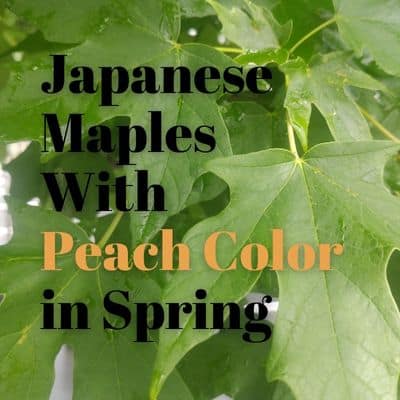
ACER CIRCINATUM ‘SUNNY SISTER’ 6-8 6-7 peach lt green yellow/ orange Amoenum upright ACER ELEGANTULUM X PALMATUM ‘JOHNNIE’S GIANT’ 6-9 FAST 15 Peach dk green yellow/ orange Matsumurae upright ACER
-
What Japanese Maples Are Orange In The Fall?
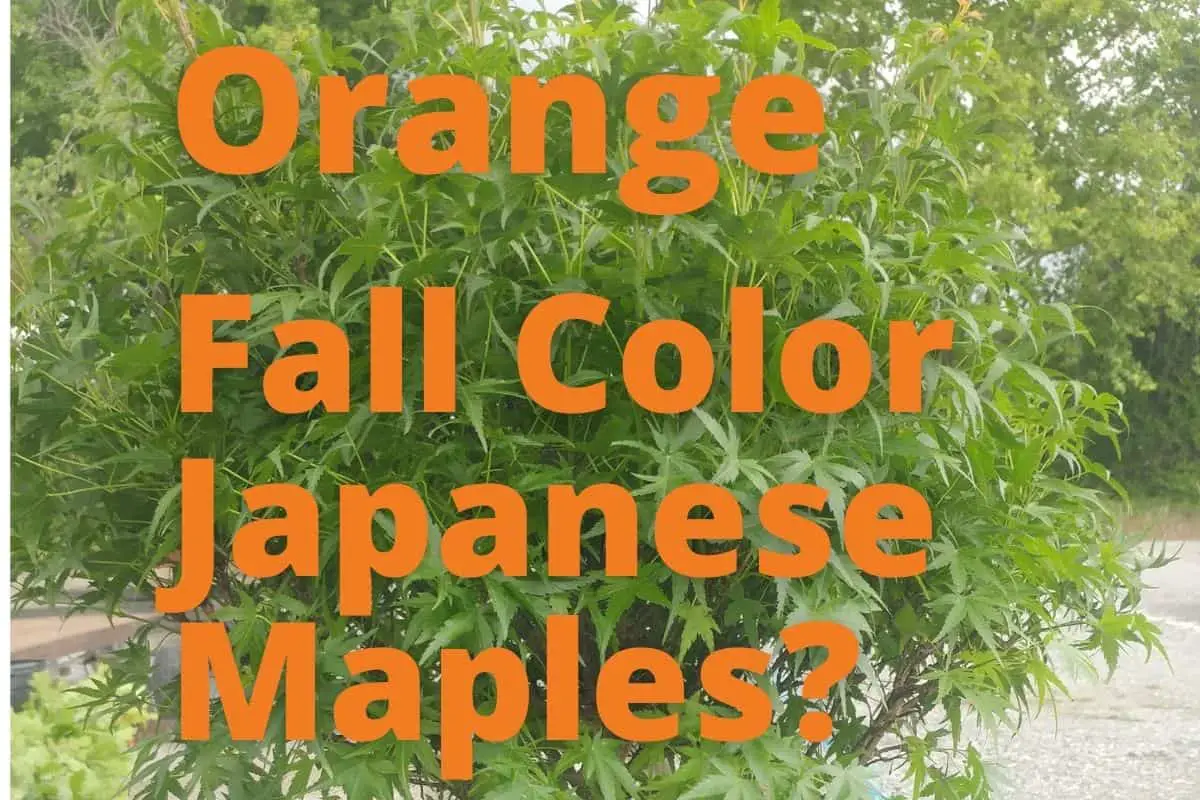
Latin name zones height 10-15 yrs spring color summer color fall color leaf type tree shape ACER JAPONICUM ‘EMMETT’S PUMPKIN’ FULL MOON 5-9 12-15 org/over green dark green orange Palmatum



